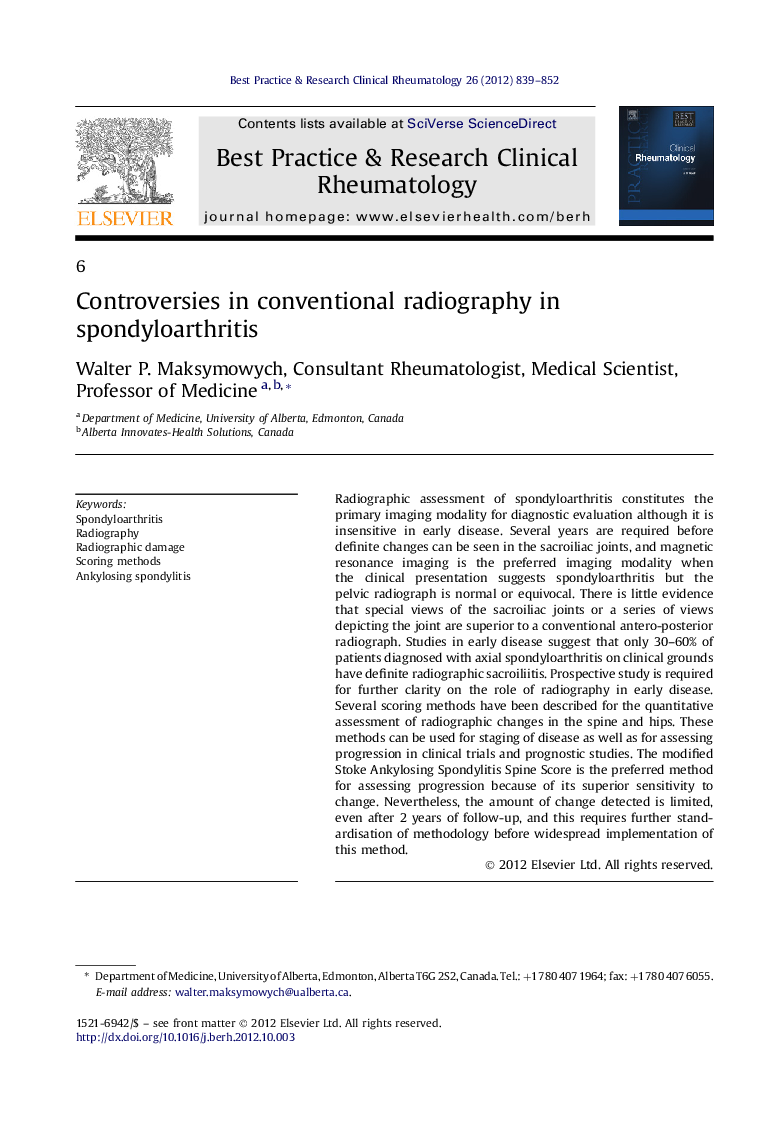| کد مقاله | کد نشریه | سال انتشار | مقاله انگلیسی | نسخه تمام متن |
|---|---|---|---|---|
| 3342938 | 1214386 | 2012 | 14 صفحه PDF | دانلود رایگان |

Radiographic assessment of spondyloarthritis constitutes the primary imaging modality for diagnostic evaluation although it is insensitive in early disease. Several years are required before definite changes can be seen in the sacroiliac joints, and magnetic resonance imaging is the preferred imaging modality when the clinical presentation suggests spondyloarthritis but the pelvic radiograph is normal or equivocal. There is little evidence that special views of the sacroiliac joints or a series of views depicting the joint are superior to a conventional antero-posterior radiograph. Studies in early disease suggest that only 30–60% of patients diagnosed with axial spondyloarthritis on clinical grounds have definite radiographic sacroiliitis. Prospective study is required for further clarity on the role of radiography in early disease. Several scoring methods have been described for the quantitative assessment of radiographic changes in the spine and hips. These methods can be used for staging of disease as well as for assessing progression in clinical trials and prognostic studies. The modified Stoke Ankylosing Spondylitis Spine Score is the preferred method for assessing progression because of its superior sensitivity to change. Nevertheless, the amount of change detected is limited, even after 2 years of follow-up, and this requires further standardisation of methodology before widespread implementation of this method.
Journal: Best Practice & Research Clinical Rheumatology - Volume 26, Issue 6, December 2012, Pages 839–852